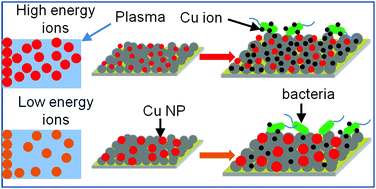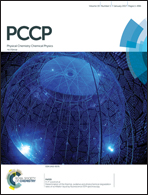Size-controlled growth and antibacterial mechanism for Cu:C nanocomposite thin films
Abstract
The interdependence of ‘size’ and ‘volume-fraction’ hinders the identification of their individual role in the interface properties of metal nanoparticles (NPs) embedded in a matrix. Here, the case of Cu NPs embedded in a C matrix is presented for their profound antibacterial activity. Cu:C nanocomposite thin films with fixed Cu content (≈12 atomic%) are prepared using a plasma process where plasma energy controls the size of Cu NPs (from 9 nm to 16 nm). An inverse relationship between the size-effect on antibacterial activity against Escherichia coli and Staphylococcus aureus bacteria is established through the real time monitoring of an aliquot by inductively coupled plasma mass spectrometry, which confirmed the inverse relationship of Cu ion release from the nanocomposite with varied Cu NP sizes. It was found that enhancing the total power density increases the plasma density as well as effective kinetic energy of the plasma species, which in turn creates a large number of nucleation sites and restricts the island kind of growth of Cu NPs. The mechanism of NP size-control is illustrated on the basis of ion density and nucleation and the growth regime of plasma species. This physical approach to NP size reduction anticipates a contamination-free competitive recipe of size-control to capping based chemical methods.



 Please wait while we load your content...
Please wait while we load your content...